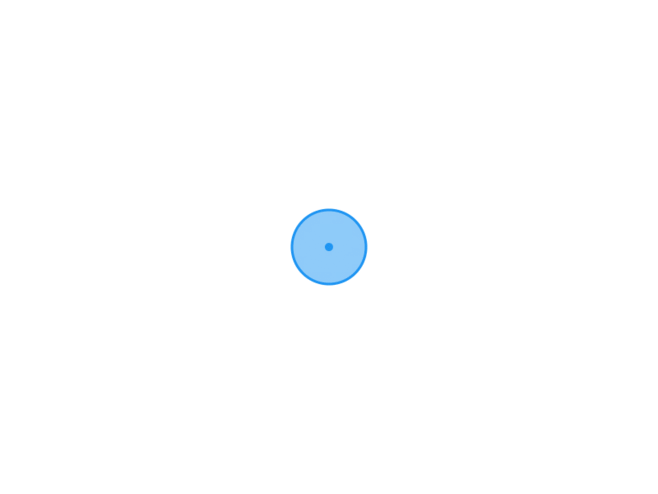查询数据库中的数据
定义一个const常量,使用wx.cloud.database()方法
const db = wx.cloud.database();
//将db连接数据库,用const定义,定义为全局变量
使用collection().doc().get()方法获取数据库中的数据
db.collection("Demolist").get({ //获取数据库,db为已连接到数据库的值
success:res=>{
this.setData({
dataList:res.data
})
console.log(res);
}
db.collection("Demolist").doc("id").get({
//doc中写入id值可以查询特定的数据,不加doc全部获取
success:docRes=>{
this.setData({
docList:docRes.data
})
}
})
//打印结果
//{data: Array(2), errMsg: "collection.get:ok"}
//{data: {…}, errMsg: "document.get:ok"}
通过自定义的字段去查询数据:Collection.where(Object obj)
查询与obj中字段的变量值相同的记录
db.collection("Demolist").where({ author:"小明" }).get({
//使用where({})进行自定义字段查询数据,只有一条记录但回调结果仍是数组
success:wheRes=>{
console.log(wheRes);
}
})
//打印结果
//{data: Array(1), errMsg: "collection.get:ok"}
链式回调:then( function fun )
相当于success:res=>{ }
链式回调使代码更简洁
//回调地狱,链式回调,相当于在success中又一次进行db.collection().get({ success:res=>{} })
//使用then方法与get中写入success回调函数作用相同
db.collection("Demolist").get().then(theRes=>{
console.log(theRes);
}).then(theRes1=>{
console.log(theRes1);
})
db.collection("Demolist").get({
success:theRes=>{
console.log(theRes);
db.collection("Demolist").get({
success:theRes1=>{
console.log(theRes1);
}
})
}
})
//上面两段代码运行结果相同
添加数据到数据库:Collection.add(Object obj)
向数据库中添加一条记录,obj中的data中写入添加的字段
<button type="primary" bindtap="addData">添加一条数据</button>
addData(){ //自定义的事件函数
db.collection("Demolist").add({
data:{ //需要添加的数据,Object类型
title:"测试标题",
author:"一个作者",
content:"KFHAKHFNSUFHA"
}
}).then(res=>{ //then回调函数
console.log(res);
})
},
数据更新:Collection.update()
只有通过add()添加的数据才能用update()进行更新,若是在云端数据库手动添加的记录需要使用云函数更新,使用update()返回成功但不会修改 stats:{update:0}
addData(){
db.collection("Demolist").add({
data:{
title:"111",
author:["222","333"],
content:"ccc"
}
}).then(res=>{ console.log(res) })
},
updateData(){
db.collection("Demolist").doc("id").update({
//该条记录为云数据库手动添加的记录
data:{
author:"更改的作者"
}
}).then(res=>{
console.log(res)
})
//update()修改返回成功但无效,返回显示stats:{update: 0}
},
更新指令:remove(),push(),pop()…
command的方法
查看记录条数:count()
getDataNum(){ //获取记录个数 total
db.collection("Demolist").count().then(res=>{
console.log(res);
})
},
//打印结果
// {total: 2, errMsg: "collection.count:ok"}
限制数量:Collection.limit(number num)
指定查询结果集数量上限
在小程序端默认及最大上限为 20,在云函数端默认及最大上限为 1000
LimitBtn(){
db.collection("Demolist").limit(2).get().then(res=>{
console.log(res);
})
},
// 打印结果
// {data: Array(2), errMsg: "collection.get:ok"}
排序:Collection.orderBy(String str, String ord)
参数str表示根据该字段进行排序,ord表示排序类型(asc为升序,desc为降序)
orderByBtn(){
//以hits字段进行顺序排序,desc为降序
db.collection("Demolist").orderBy("hits","asc").get().then(orderRes=>{
console.log(orderRes);
})
//多级orderBy()
//先以hits字段倒序排序,若hits字段相同,再按id字段顺序排序
db.collection("Demolist").orderBy("hits","desc").orderBy("id","asc").get().then(orderRes=>{
console.log(orderRes);
})
},
跳过数据:Collection.skip(number num)
指定查询返回结果时从指定序列后的结果开始返回
配合limit()可实现分页功能
skipBtn(){
//Demolist中有4条记录
//skip(num) 跳过num条记录,从第num+1条记录开始读取,配合limit()可以实现分页功能,
db.collection("Demolist").limit(2).skip(2).get().then(skipRes=>{
console.log(skipRes);
})
db.collection("Demolist").limit(2).skip(3).get().then(skipRes=>{
console.log(skipRes);
})
},
// 打印结果
// {data: Array(2), errMsg: "collection.get:ok"}
// {data: Array(1), errMsg: "collection.get:ok"}
指定返回字段:Collection.field(Object obj)
方法接受一个必填对象用于指定需返回的字段,对象的各个 key 表示要返回或不要返回的字段,value 传入 true|false(或 1|-1)表示要返回还是不要返回。
fieldBtn(){
db.collection("Demolist").field({
title:true,
author:true
}).get().then(fieRes=>{
console.log(fieRes);
})
},
//打印结果
//data: Array(4)
版权说明
文章采用: 《署名-非商业性使用-相同方式共享 4.0 国际 (CC BY-NC-SA 4.0)》许可协议授权。版权声明:本站绝大数资源来自互联网收集,如有侵权、不妥之处,请联系站长删除。敬请谅解!



